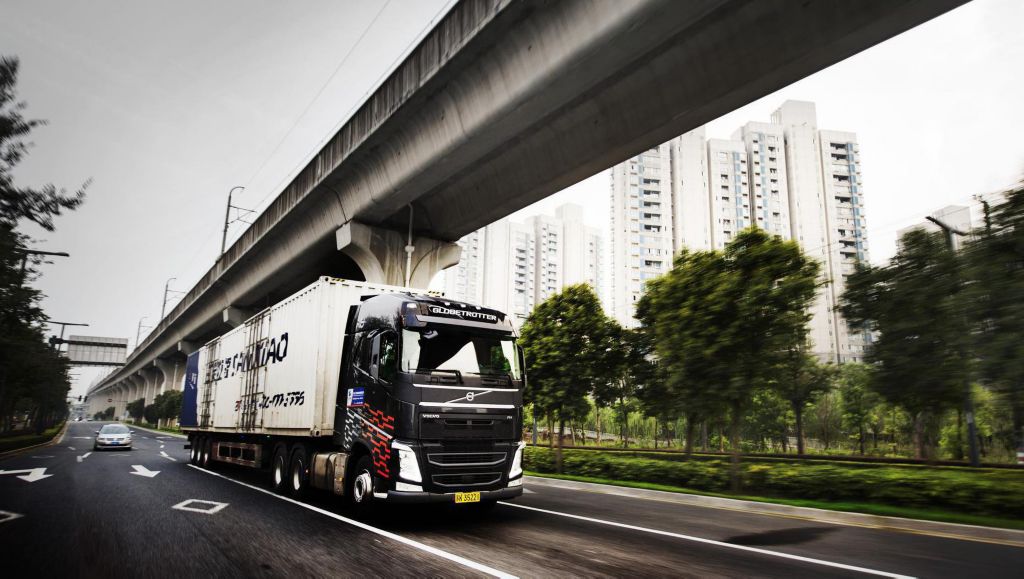How e-commerce is changing China's logistics industry


E-commerce is not only changing the way China shops but also its logistics industry. Uptime and efficiency are suddenly the name of the game.
China’s e-commerce industry has grabbed headlines worldwide as the country overtook the US last year to become the world’s largest e-commerce market. Almost overnight, China’s legions of white-collar workers, from hip youngsters to farmers, are now buying goods online. In a single, record-breaking day in November last year, Chinese consumers placed 280 million orders with the country’s largest e-commerce company. But China’s digital malls are not only changing the way China shops, they are transforming the country’s logistic sector.
“It’s not so much a question of prices right now, it is about getting goods to their destination on time,” says Zhou Zhili, President of Sanxiao Logistics.
Zhou Zhili is sitting behind a tea table carved out of a 1,500 year-old tree root at an office in the outskirts of Shanghai. He pours tea according to the traditional Chinese method, which involves wetting and rinsing the tealeaves, and splashing water across the cups and table several times until the best taste is achieved. It is from behind this tea table that Zhou meets his suppliers and customers.
We have built our brand through our Volvo trucks. They are reliable and that is important to getting business.
At first glance, Zhou Zhili cuts a traditional figure. As far back as the 7th century, Tang-dynasty statesmen also drank tea and held court at similar tables. With a round face and combed black hair, he is also reminiscent of another historical figure, Mao Zedong, who still adorns public squares and banknotes in China.
But in reality, Zhou is testament to the huge changes that have transformed modern China during the past thirty years.
Once a peasant from one of China’s poorest areas, Zhou scraped together money from friends and relatives in the early 1990’s to buy and drive his first truck.
“That first night, I was so happy, I slept in the truck,” says Zhou with a broad grin.
From there, he worked his way up to become a fleet manager at Sanxiao, then a state-owned company. When the logistics division of the firm was spun-off to form an independent logistics operator, Zhou became president.
Today, Sanxiao Logistics is a sprawling company that operates over 20 logistics centres across China and has a 500-strong truck fleet, including a growing number of Volvo trucks. Zhou bought the first new Volvo FH sold in China. Now he owns eight FH trucks from the new Volvo range.
It is also a company that exemplifies how nimbly even large companies adapt to change in China.
Amazingly, Sanxiao Logistics was hardly doing any e-commerce deliveries six months ago. Today, it’s more than 50 percent of its business.
Volvo trucks have been essential to this turn-around, says Zhou Zhili: “We have built our brand through our Volvo trucks. They are reliable and that is important to getting business.”
It may seem like it should be relatively simple to develop a business in a large, booming economy such as China. But, despite the size of the market and the fast-paced economic growth in the country, the transport industry is struggling from overcapacity and inefficiency – as a result many operators struggle to make money.
Following major government-backed infrastructure projects, which were introduced to limit the effect of the global financial crisis on China, the truck market swelled dramatically topping 1.3 million truck sales in 2010.
Today, there is no shortage of trucks on the roads in China. As a result, trucks often stand idle outside cities waiting for their loads, and a third of trucks drive back empty after a delivery.
For Sanxiao Logistics the key to profitability in this tough market has been focusing on delivering high-value goods including e-commerce products and taking on time-sensitive assignments.
My philosophy is to lead change, not just follow it.
To raise its efficiency and manage the complexities of this business, Sanxiao brought in talent, including the company’s current fleet manager, who has logistic experience from multinational TNT. And while many of its competitors drive their trucks hard until their motors don’t run efficiently or break down en route, Sanxiao invested in Volvo Gold Contract service agreements for all its Volvo vehicles, to guarantee maximum uptime and low fuel consumption.
“These days we expect our trucks to cover 40,000 km a month: they drive non-stop,” says Zhou.
In part, it is China’s massive size that has allowed the e-commerce industry to grow strong there. Through the web, citizens in the remote west can now access to the same fashionable goods as people in cosmopolitan Shanghai.
Covering such a big market is a challenge. But it is also these large distances that have allowed Sanxiao to flourish. It is especially on these long trips that the company investments in vehicles that deliver high fuel efficiency and uptime, pay off. The first new black FH the company bought, for example, covers 4,000 kilometres on its route from Shanghai to China’s far west.
Zhou himself shrugs off the challenges to developing his businesses. “Challenges are also chances,” Zhou underlines. “My philosophy is to lead change, not just follow it.”
Volvo all the way
Vehicles: 8 FH 440 6×2 tractors, 6 FH 480 6×2 tractors and 8 FH 460 6×2 tractors from the new range.
Working environment: Long distance drives covering all climates. China’s south is semi-tropical while in northwestern China temperatures can drop to –20 °C.
Applications: All Volvo trucks have I-shift and two sleeping bulks. The eight FH 460 6×2 tractors, also include advanced features such as Volvo Dynamic Steering, Lane Keeping Support and Adaptive Cruise Control.
Fuel consumption: 37 litre/100 km for vehicles with a gross combination weight of 55 tonnes.